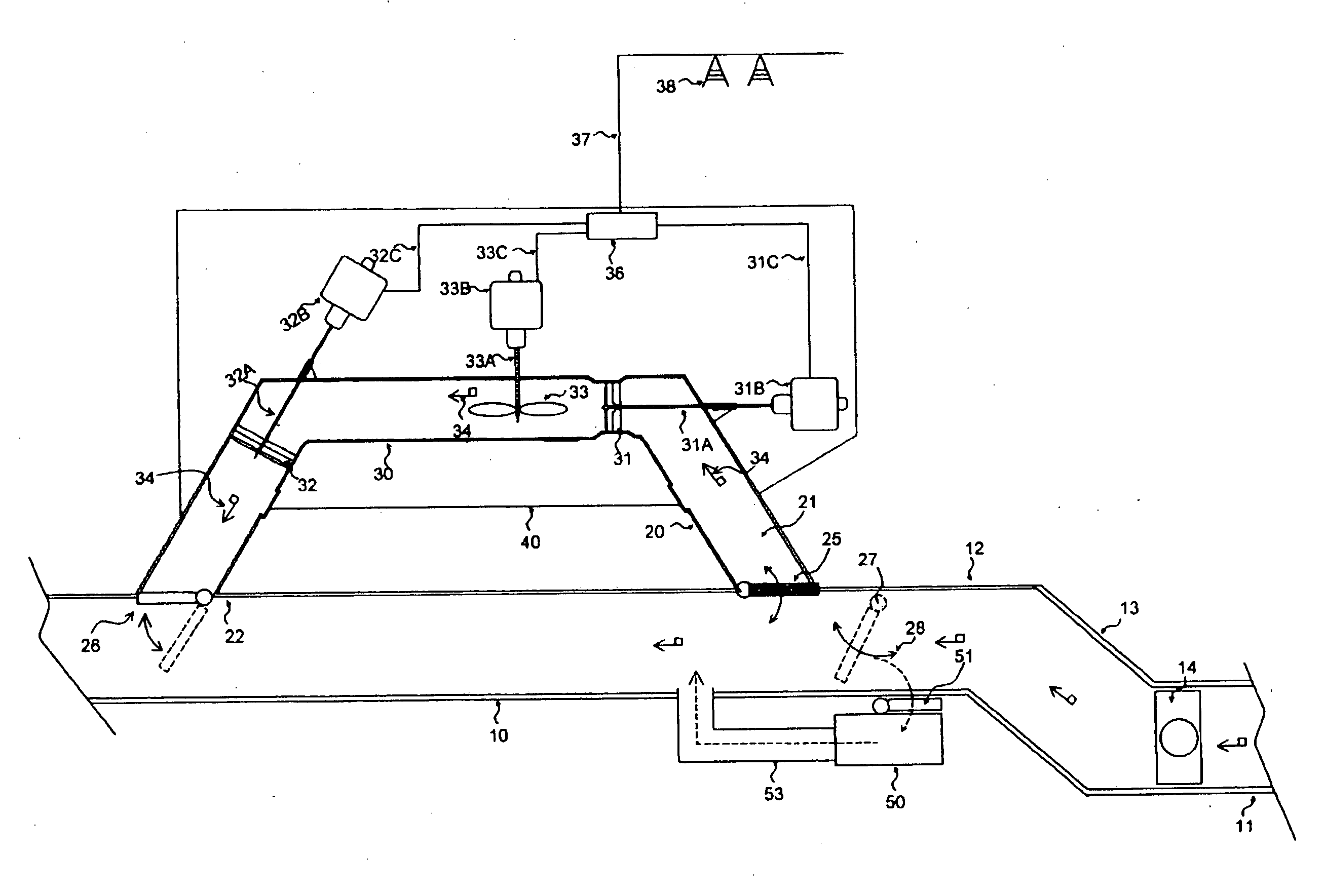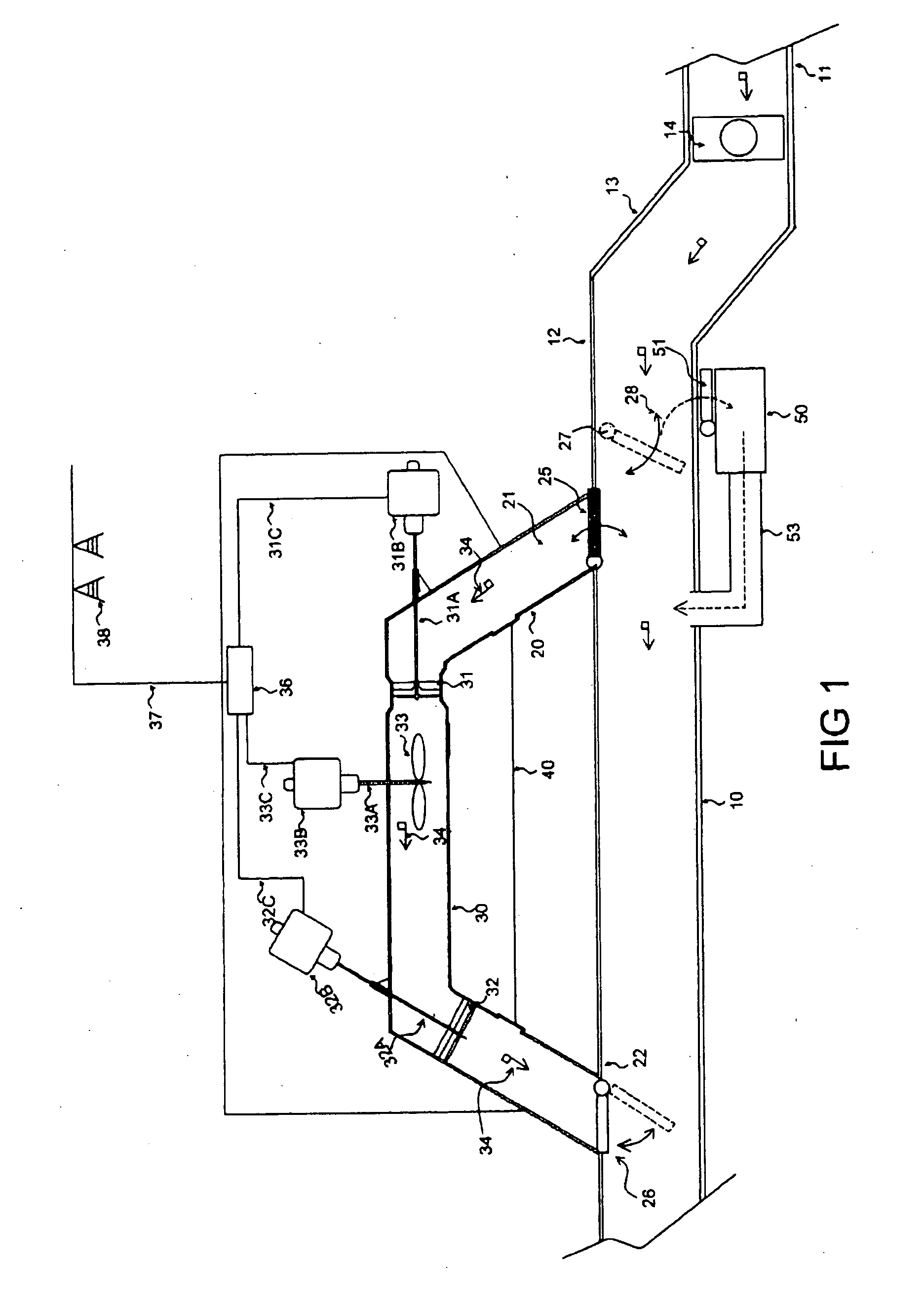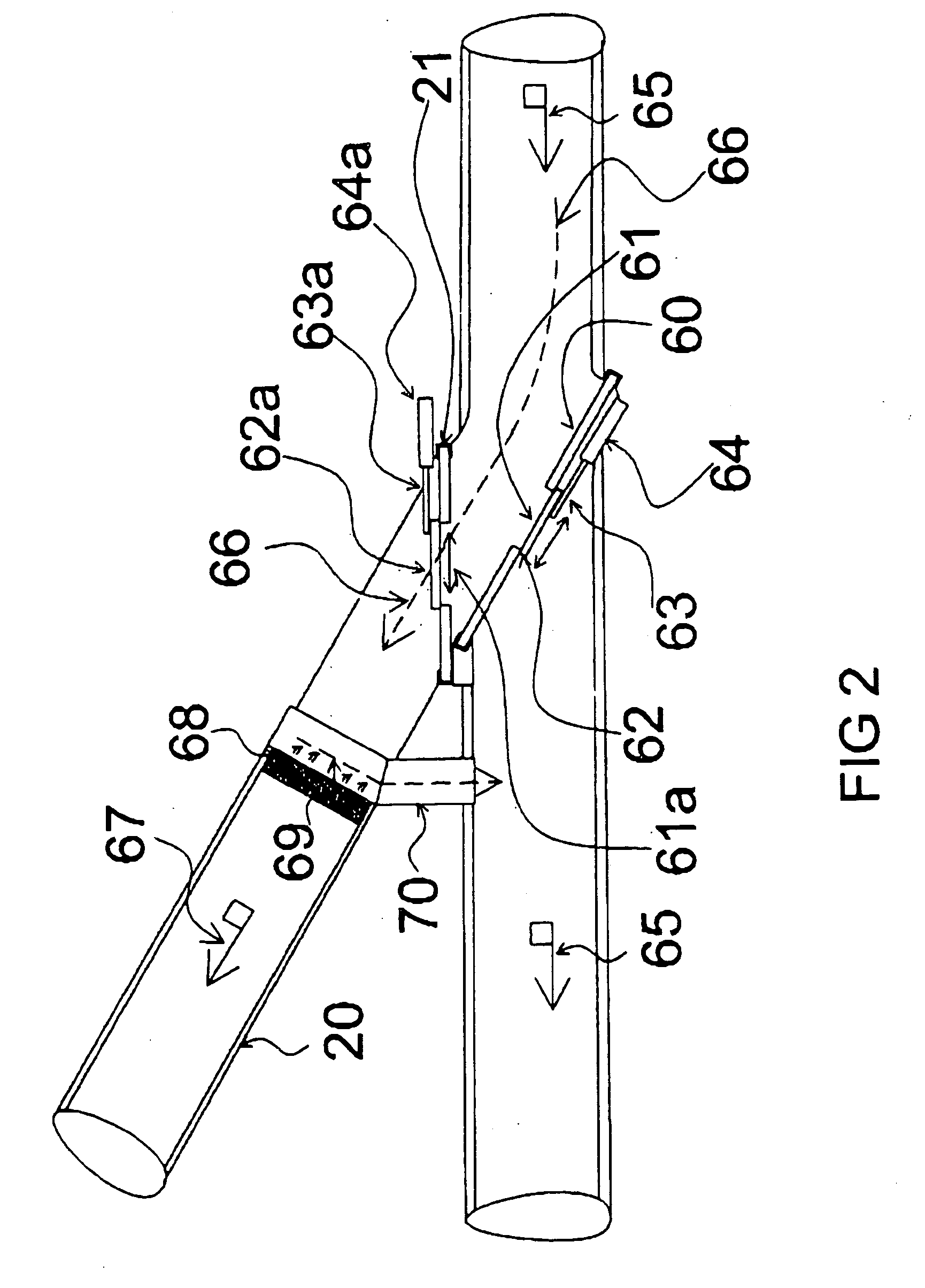Waste water electrical power generating system
- Summary
- Abstract
- Description
- Claims
- Application Information
AI Technical Summary
Benefits of technology
Problems solved by technology
Method used
Image
Examples
Embodiment Construction
[0022]FIG. 1 schematically illustrates the system for generating electrical power using sewage waste water flow for the operating energy. The drawing schematically illustrates a conventional sanitary sewer main pipeline 10 through which liquid sewage is conveyed. Sewage may be fed into the pipeline 10 from smaller or lateral feeder pipes, not shown in the drawing. The arrangement and construction of the sewer large or main line and the feeder pipes are conventional.
[0023] In a conventional sewer pipeline, the pipe is sloped relative to the land so that fluid gravity flows along the length of the pipe. Since such pipelines are normally relatively long, and frequently the ground contours slope in different directions, it is customary to lay the pipeline in sections which start at a low point and slope upward to a high point. At the low point, the liquid in the pipe is sometimes raised by pumping equipment to the next high point of the pipe section where it begins its movement again. ...
PUM
 Login to View More
Login to View More Abstract
Description
Claims
Application Information
 Login to View More
Login to View More - R&D
- Intellectual Property
- Life Sciences
- Materials
- Tech Scout
- Unparalleled Data Quality
- Higher Quality Content
- 60% Fewer Hallucinations
Browse by: Latest US Patents, China's latest patents, Technical Efficacy Thesaurus, Application Domain, Technology Topic, Popular Technical Reports.
© 2025 PatSnap. All rights reserved.Legal|Privacy policy|Modern Slavery Act Transparency Statement|Sitemap|About US| Contact US: help@patsnap.com



